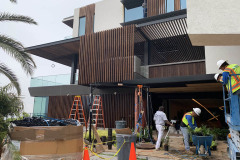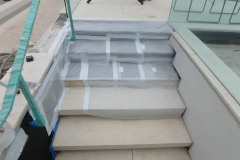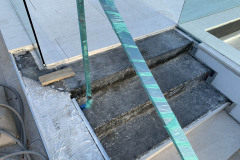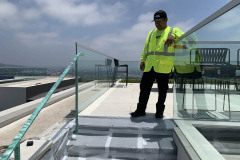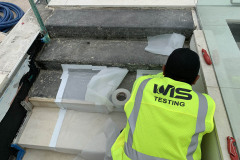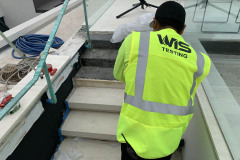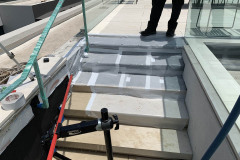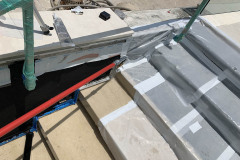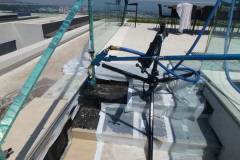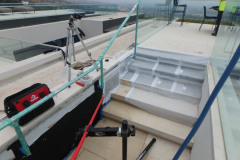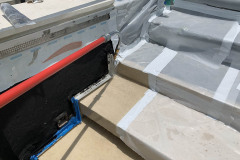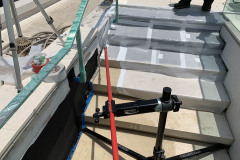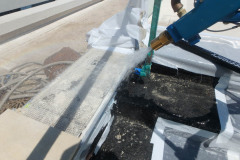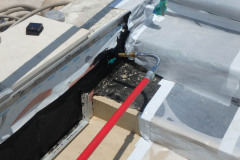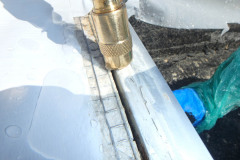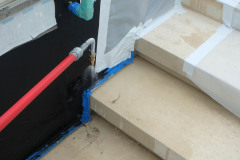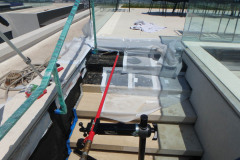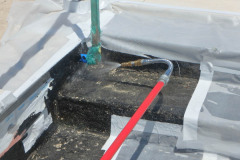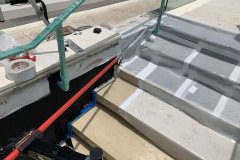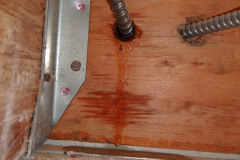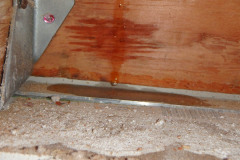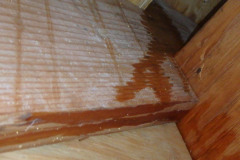Forensic Water Intrusion Testing in Los Angeles
This is a forensic test we performed on this new construction home in Beverly Hills. The reason we were called was because there was a leak in this stair system. Unfortunately for us, we weren’t given any information other than the client stating “it leaks around this area when it rains…here”.
Naturally, when we arrive on site we have to establish a testing protocol. In this case, we utilized the ASTM E2128 as well as other leak detection practices since this was not a window leak. Therefore, the E2128 seemed to be most logical approach. We needed to access the underside of the deck. Because of this, the client ended up cutting holes in the ceiling. After this, we proceeded to systematically isolate the steps as pictured below.
Water Intrusion Testing in progress
Once testing started, we proceeded to test each section individually in roughly 10 minute increments. Starting from the bottom and working our way upwards. The Forensic Water Intrusion Testing process is slow and time consuming but very effective in locating small water intrusion points.
Within a few hours of performing these tests in this manner, we located our first water drip. It’s about this time that we move to isolate areas even further and within 3-6″ squares. It wasn’t until this process where we were able to narrow the leaking within a 12″ x 12″ square.
Water intrusion testing equipment
The entire time we were there we suspected the railing penetration into the parapet, but because we’re unable to make any assumptions before testing, we relied on the equipment to do its job. Speaking of equipment… the equipment we used for the test was a hand held AAMA 501.2 wand. The wand is a calibrated piece of equipment which we use daily to perform many of our water intrusion tests. On the other hand, the stick was made by us out of necessity. We use this tool for very small precise testing, usually in very small areas. All of this equipment we also available to rent to other water intrusion testing agencies.
As it turns out, the railing penetration was in fact the issue.


